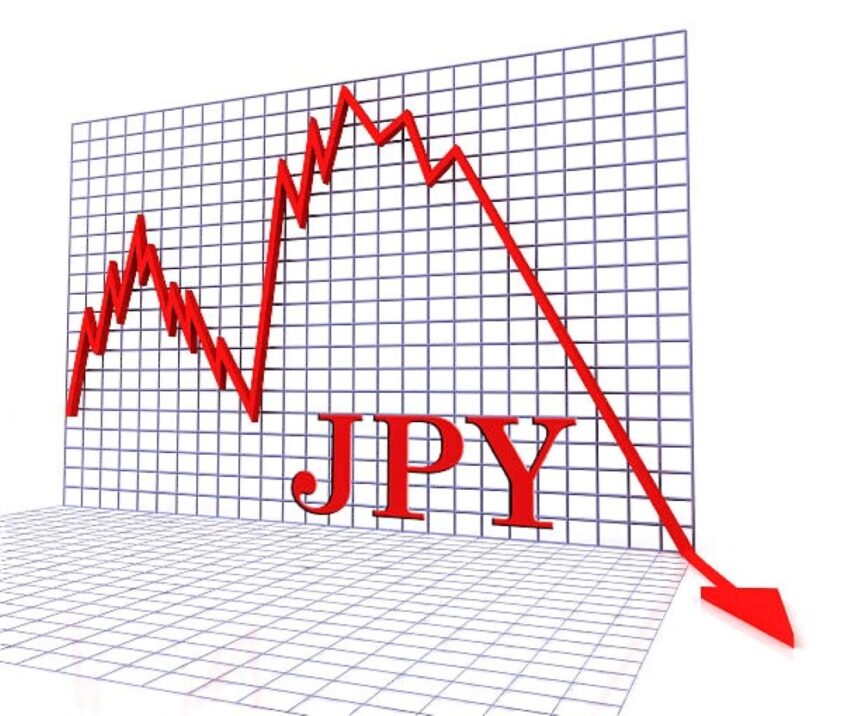Japanese Yen Slides but Downside May Be Limited: BoJ Hawkishness Clashes with Fading USD Strength.
The Japanese Yen (JPY) extended intraday losses on Friday as positive sentiment around US-China trade relations weakened demand for safe-haven assets. However, strong Tokyo inflation data reinforced expectations for further Bank of Japan (BoJ) rate hikes, limiting any deeper downside for the Japanese yen. Simultaneously, dovish rhetoric from Federal Reserve (Fed) officials continues to curb the US Dollar’s (USD) upside, keeping the USDJPY pair’s gains in check.
Risk-On Sentiment Dampens Japanese yen Appeal Amid Trade Deal Optimism
The JPY came under pressure during Asian trading hours on Friday as a modestly stronger US Dollar and growing optimism surrounding US-China trade negotiations lifted the USDJPY pair beyond the 143.00 psychological threshold.
Investors welcomed reports suggesting that high-level discussions had taken place between US and Chinese officials to ease long-standing trade tensions. US President Donald Trump indicated that both sides had spoken on Thursday, while a White House spokesperson confirmed that lower-level talks, including phone and in-person meetings, had been held earlier in the week.
Though Chinese sources refuted these claims, the news was enough to generate a risk-on mood across financial markets. Equity indices in Asia rose broadly, while the safe-haven JPY saw fresh selling interest. These developments underscore how quickly sentiment can swing on geopolitical headlines, particularly those tied to US-China relations.
However, conflicting statements from Washington and Beijing continue to inject uncertainty into the broader narrative, meaning the situation could remain fluid and trigger episodes of risk aversion that support safe-haven demand intermittently.
Tokyo CPI Surprises to the Upside, Cementing BoJ Hawkish Expectations
Despite weakening on Friday, the JPY’s downside was cushioned by fresh evidence of rising inflationary pressure in Japan. Data released by Japan’s Statistics Bureau showed that the Tokyo Consumer Price Index (CPI) rose 3.5% year-on-year (YoY) in April, up sharply from March’s 2.9% reading.
The Tokyo Core CPI, which excludes fresh food prices, increased by 3.4% YoY, beating expectations of 3.2% and marking a two-year high. Even more significantly, the “core-core” CPI—stripping out both food and energy—rose to 3.1% from 2.2% in March, indicating that price gains are broadening beyond volatile categories.
This robust inflation print reinforces growing market belief that the Bank of Japan may continue raising interest rates in 2025, following its surprise 50 basis point hike earlier this year—the first in 17 years. With inflation showing signs of persistence and broadening, BoJ policymakers have increased leeway to shift away from ultra-accommodative policy.
BoJ Governor Kazuo Ueda has repeatedly emphasized the importance of achieving stable, sustainable inflation. April’s Tokyo CPI data strengthens the case for more rate increases in the coming quarters, which could gradually erode the JPY’s underperformance relative to other major currencies.
Dovish Fed Rhetoric Limits USD Gains Despite Strong Economic Data
On the other side of the Pacific, the US Dollar’s modest strength was tempered by a growing consensus that the Federal Reserve may pivot toward rate cuts sooner than previously expected. Recent dovish comments from several Fed officials have fueled these expectations, despite resilient US economic data.
Fed Governor Christopher Waller said on Thursday he would support cutting interest rates if trade-related tariffs begin to negatively impact US jobs. Meanwhile, Cleveland Fed President Beth Hammack indicated that a rate cut as early as June could be on the table, provided more clarity emerges on the economic outlook.
These remarks came in sharp contrast to Fed Chair Jerome Powell’s earlier position that the Fed can afford to wait for “greater clarity” before adjusting policy. Nonetheless, markets are increasingly pricing in at least three 25 basis point cuts by the end of 2025.
Interestingly, this dovish shift in Fed expectations is occurring even as hard data continues to beat forecasts. On Thursday, the US Department of Labor reported that Initial Jobless Claims rose modestly to 222,000, pointing to ongoing strength in the labor market. At the same time, Durable Goods Orders surged by an eye-popping 9.2% in March—far exceeding the expected 2% gain—driven by a 27% jump in transportation equipment orders.
This disconnect between the data and Fed rhetoric suggests that the central bank is prioritizing potential downside risks over recent economic strength. As such, even positive economic releases are struggling to lift the USD meaningfully, limiting the USD/JPY pair’s upside potential.
Diverging Central Bank Policies to Dictate Japanese yen Direction
The BoJ and the Fed appear to be heading in opposite policy directions—a dynamic that may continue to shape the USD/JPY pair in the medium term.
The BoJ’s shift away from negative interest rates and yield curve control policies marks a historic turning point for Japanese monetary policy. If inflation remains above target and wage growth accelerates, further hikes could follow, gradually restoring the JPY’s appeal.
In contrast, the Fed’s cautious tone amid global economic uncertainty and geopolitical risks has tilted the market toward anticipating a more accommodative stance, especially if inflation continues to ease.
This divergence could create a tug-of-war for USD/JPY, especially if rate differentials begin to compress. For now, the pair remains supported by near-term USD resilience and positive risk sentiment, but any sharp repricing of Fed rate cut expectations or renewed safe-haven flows could trigger JPY strength.
Japan-US Trade Talks in Focus: Potential Catalyst for Japanese Yen Volatility
Adding to the complex backdrop is the upcoming second round of trade talks between Japan and the United States, scheduled for next week. Japanese Economy Minister Ryosei Akazawa will meet US Treasury Secretary Scott Bessent to discuss bilateral trade and investment issues.
A breakthrough in trade negotiations could support the JPY by strengthening Japan’s export outlook, especially if it results in reduced tariffs or enhanced market access. Conversely, if tensions escalate or if the US demands concessions that weigh on Japanese competitiveness, the Yen could come under renewed pressure.
Traders will be watching these discussions closely, as trade outcomes often influence currency markets in addition to broader equity and commodity trends.
Technical Outlook: USDJPY Faces Resistance Above 143.50, Support at 142.00
From a technical standpoint, the USD/JPY pair continues to face resistance around the 143.50 zone, a level that previously acted as a ceiling during March’s rally. A sustained move above this level could open the door for a run toward the 144.70-145.00 region.
On the downside, key support is seen near 142.00, with stronger demand likely around the 141.50 mark—coinciding with the 50-day moving average. A decisive break below this zone could signal a deeper pullback, especially if BoJ rate hike speculation intensifies.
Momentum indicators on the daily chart remain mildly bullish but suggest consolidation may continue unless a catalyst triggers a decisive breakout.
Conclusion: Yen Weakness May Be Fleeting as Inflation Rises and Fed Dovishness Persists
While the Japanese Yen is under pressure amid reduced safe-haven demand and a slightly firmer US Dollar, the downside may remain limited in the near term. Strong inflation data out of Tokyo solidifies the case for further BoJ tightening, while dovish signals from the Fed limit USD strength.
The interplay between these opposing forces, coupled with evolving trade headlines and central bank guidance, will likely dictate the next directional move in USDJPY. Traders should remain nimble and watch for high-impact data and geopolitical developments that could trigger volatility on either side of the pair.







